Experimental study on the influence of pressing force and time on thermal effect of An-pressing manipulation
Li Wu (李武), Jiang Quan-rui (蒋全睿), Ai Kun (艾坤), Liu Xiao-wei (刘小卫), Yu Jun (于隽), Li Jiang-shan (李江山)
Hunan University of Chinese Medicine, Changsha 410208, China
Abstract
Keywords: Tuina; Massage; An-pressing Manipulation; Point, Xinshu (BL 15); Temperature; Healthy Volunteers
Thermal effect is considered as one of the action mechanisms of An-pressing manipulation.Through long-term clinical experience, ancient people had discovered that the thermal effect produced by Anpressing manipulation can reduce or even alleviate pain[1].Despite the recognition of this thermal action mechanism, ancient people did not give enough details of the specific method.It is worth contemplating for each tuina practitioner that how the thermal effect relates to the manipulation itself.Huang Di Nei Jing(Yellow Emperor’s Classic of Internal Medicine) and other classics all highlight the importance of force in tuina manipulations and hold that the thermal effect of An-pressing manipulation should be associated with the pressing duration[2-3].Based on the views of ancient people, this article adopted infrared thermography to observe the influence of pressing force and time on the thermal effect of An-pressing manipulation, with a hope to provide evidence for further study on the thermal effect of this manipulation.
1 Materials and Methods
1.1 General data
Eight healthy male student volunteers, aged 18-24 years old, were recruited from Hunan University of Chinese Medicine, all with a normal figure and height 172-178 cm.They did not play any intensive sports(including rope skipping, jogging, court games, workout and swimming that can significantly increase heart beat and cause sweating), stay up late, catch a cold, drink alcohol, have a significant change in emotion or receive any intensive stimulation in the previous week.These volunteers were asked to fill in a body constitution questionnaire at the recruitment and only those who had a normal body constitution were enrolled with informed consent form signed.However, the enrolled ones would be excluded if his body constitution was diagnosed as abnormal type by infrared imaging test.
1.2 Environment control
The room temperature was controlled at 24-26 ℃and humidity at 54%-60%.The tests were performed at one same place inside the infrared detection cabin which was insulated from the outside, without air flow or influence by noise or electromagnetic source.The infrared lens was adjusted to point to the back of the volunteer and the black body was fixed (used to control the temperature baseline).The temperature width was set at 6.4 ℃ and temperature window at 30 ℃.Considering the change of body temperature during a day, the tests were all conducted during 14:30-16:30.The volunteers were not allowed to have any spicy or cold food for lunch on the day.Within 30 min before the test, they could not drink any hot water or stimulant such as coffee.Instead, they had to sit and rest quietly for 30 min before entering the detection cabin.
1.3 Detected regions
Xinshu (BL 15) on the right side was observed and the one on the left side was taken as control.According to theScience of Acupuncture and Moxibustion[4], the point was located beneath the T5spinous process,1.5 cun away.
1.4 Detection method
MTI-EXPRO-2013 digital medical infrared imaging detector (Chongqing Feizhou Electro-optical Technology Institute, China) was used for detection.The volunteer took a sitting position and thoroughly exposed his back to the lens.The volunteer first rested for 10 min to let the back cool down and the heat evenly distributed over the whole back.The body surface temperature was maintained 33-35 ℃.The infrared thermal image was taken once right before and after An-pressing treatment and at every minute during 1.0-15.0 min after the treatment.
1.5 An-pressing manipulation
An-pressing manipulation was performed by different levels of force and for different lengths of time.The force was classified into five levels, including extremely mild, mild, moderate, strong and extremely strong, and there were five different lengths of time, i.e.2.5 min,5.0 min, 7.5 min, 10.0 min and 15.0 min.When the manipulation was performed by different levels of force,it lasted 5 s for each time of pressing and the total time was 5 min.When the manipulation was performed for different lengths of time, it lasted 5 s for each time of pressing with a moderate level of force.The operation was done by one same person who had practiced tuina for over 10 years.The levels of force were determined by referring to the five classifications by Qiu GC[5]and the real practice of An-pressing manipulation.Extremely mild: very light force that could only approach the body surface.Mild: comparatively light force that could reach to the superficial layer of muscles, causing gentle feelings such as sour, distending and numb.Moderate:moderate force that could reach to the middle layer of muscles, causing stronger sour or distending feelings.Strong: comparatively strong force that could approach the deep layer of muscles, causing significant sour or distending feeling.Extremely strong: very strong force that could reach to the tendons and bones, causing intensive sour or aching feelings.The ranges of manipulation force were: extremely mild (0.25-0.50 kg),mild (0.50-1.00 kg), moderate (1.00-2.50 kg), strong(2.50-5.00 kg), and extremely strong (5.00-10.00 kg).In fact, the force in real performance mostly depended on the feeling of the receiver and the thumb feeling of the practitioner, which may lead to significant individual differences.Therefore, in order to reduce bias, the volunteers and the practitioner had to practice repeatedly to master the correct level of force.
1.6 Observation items
The temperature was recorded by the infrared thermal imaging detector and the temperature of Xinshu (BL 15) could be directly read from the operation interface.The operator recorded the temperature of Xinshu (BL 15) right before and after An-pressing treatment and at every minute during 1.0-15.0 min after the treatment.The thermal image was taken before and after the treatment, and the temperature readings of bilateral Xinshu (BL 15) were analyzed.To reduce bias, the changes in the temperature of Xinshu(BL 15) on the right side were taken as the observation values [the difference between the temperature reading of Xinshu (BL 15) on the right side at the observation time and the reading before An-pressing treatment); the changes in the temperature of Xinshu(BL 15) on the left side were taken as the baseline values [the difference between the temperature reading of Xinshu (BL 15) on the left side at the observation time and the reading before An-pressing treatment).The difference between the observation value and the baseline value was taken as the data of thermal effect.
1.7 Statistical method
The SPSS version 17.0 was used for statistical analysis.Measurement data were expressed as () and analyzed byt-test.Two-tailed test was used for all statistical analyses, andP<0.05 was considered to indicate statistical significance.
2 Results
2.1 Effect of An-pressing for different lengths of time on the temperature of Xinshu (BL 15)
After applying An-pressing for different lengths of time to Xinshu (BL 15) on the right side, the temperature of the point generally increased, indicating the production of thermal effect.With the extension of the treatment time, the thermal effect presented an increasing tendency but it started to remain constant when the treatment time approached 7.5 min.Afterwards, with the release of heat, thermal effect began to vanish and the temperature of Xinshu (BL 15)also went back to the normal state (Figure 1).
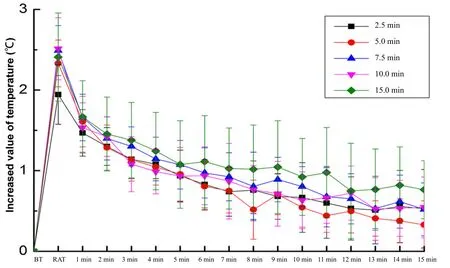
Figure 1.Thermal effect at different time points before and after An-pressing manipulation
2.2 Effect of different levels of pressing force on the temperature of Xinshu (BL 15)
After applying An-pressing manipulation at different levels of force to Xinshu (BL 15) on the right side, the temperature of the point general increased, indicating the production of thermal effect.With the increase of the pressing force, the thermal effect showed an increasing tendency but it went steady at the moderate and strong levels of force.Then, as the heat diffused,the thermal effect began to disappear.After An-pressing at the extremely mild and mild levels of force, the temperature of Xinshu (BL 15) swiftly dropped to the normal range; after the An-pressing at the moderate,strong and extremely strong levels of force, it took a longer time for the temperature to decrease to the normal range.Moreover, the stronger the force, the slower the decrease of the temperature (Figure 2).
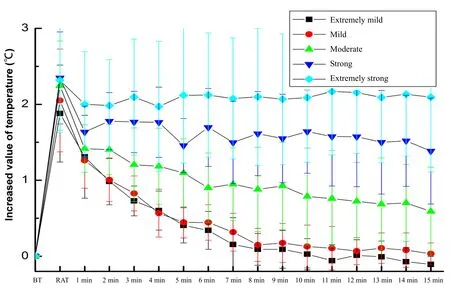
Figure 2.Thermal effect before and after An-pressing at different levels of force
2.3 The temperature of Xinshu (BL 15) right after An-pressing treatment and during the 15 min after the treatment
The change in the temperature of Xinshu (BL 15) on the right side right after An-pressing at different levels of force is shown in Figure 3 and its change during the 15 min after the treatment is shown in Figure 4.With the increase of the pressing force, the temperature right after the treatment first climbed up and then went steady, and the increase of the temperature 15 min after the treatment was more significant as the force rose up.With the increase of the pressing force, the difference between the temperature right after An-pressing manipulation and 15 min after An-pressing manipulation became smaller, showing that the pressing force influenced the decreasing speed of the temperature.
The change in the temperature of Xinshu (BL 15) on the right side right after An-pressing manipulation for different lengths of time is shown in Figure 5, and the change in the temperature 15 min after An-pressing for different lengths of time is shown in Figure 6.With the increase of the pressing time, the temperature right after An-pressing manipulation first went up and then remained steady and the temperature 15 min after the manipulation went constant with the increase of the manipulation time.This showed that the increase of the pressing time produced more marked influence on the temperature right after the manipulation, while its effect on the decreasing speed of the temperature was insignificant.
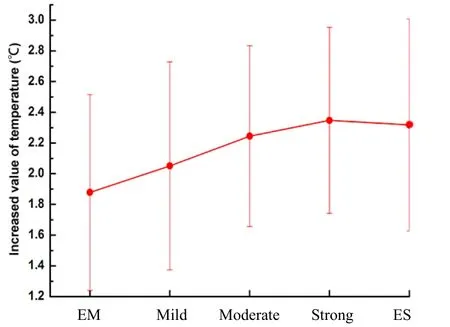
Figure 3.Thermal effect right after An-pressing at different levels of force
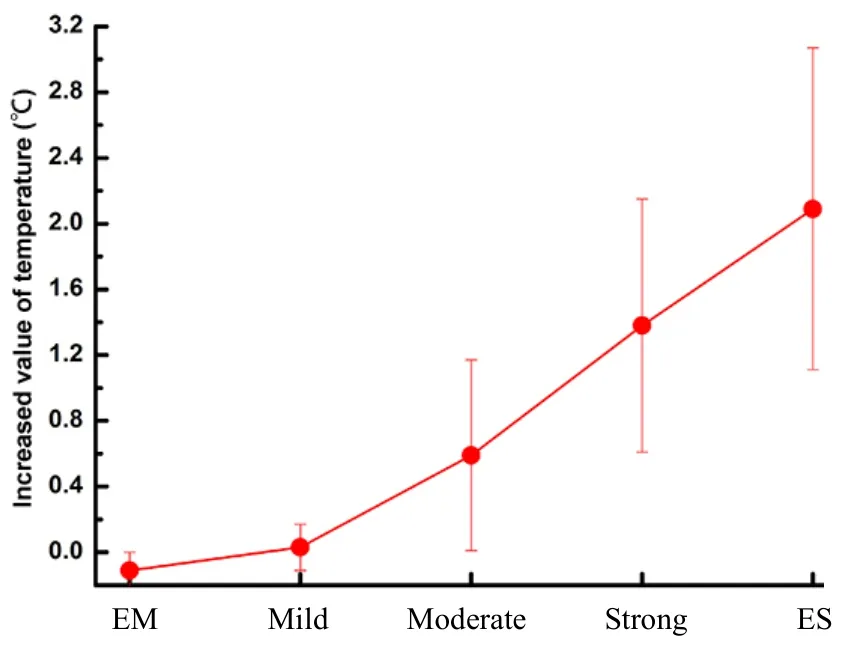
Figure 4.Thermal effect during the 15 min after An-pressing at different levels of force
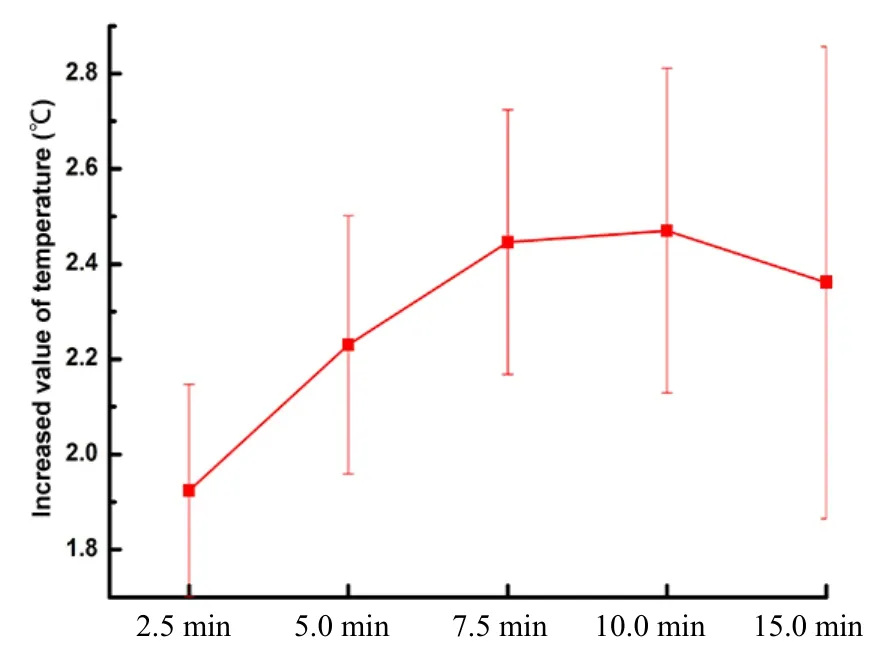
Figure 5.Thermal effect right after An-pressing for different time
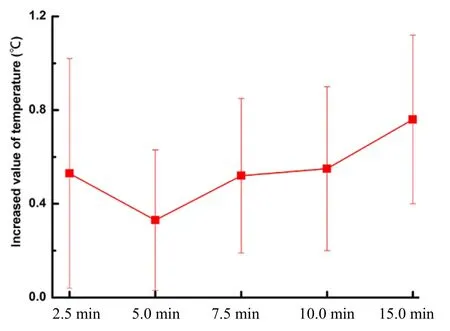
Figure 6.Thermal effect during the 15 min after An-pressing for different time
3 Discussion
An-pressing manipulation is a squeezing-pressing manipulation.It is one of the earliest manipulations introduced to tuina treatment and also one of the most popular manipulations practiced in tuina clinic[6].An-pressing manipulation works to circulate qi and blood, warm meridians and disperse cold through the thermal effect produced by pressing.
The efficacy of tuina treatment depends on the stimulation intensity, duration and frequency of the manipulation, while effective manipulation intensity consists of multiple parameters such as force, direction and frequency[7].Some scholars hold that the stimulation intensity of a tuina manipulation is closely related to the treated area, force, direction and duration[8].But some other people believe that the operation of tuina should follow the golden mean(moderation) concept of ancient China, so that each parameter should be moderate, not too big or too small but just adequate[9].An-pressing manipulation is to perform a force perpendicular to the surface of the selected acupoint.In clinical practice, it is found that the pressing force and duration can produce a significant effect on the treatment result.This study observed the thermal effect produced by An-pressing manipulation by focusing on two key factors, pressing force and pressing duration, that influence the thermal effect.
People in ancient time brought up that tuina practitioner should have strong fingers.However, it does not mean that the stronger the better.Because an excessive strength may cause injury[10].It is a pity that none of the textbooks has ever described the level of force in An-pressing manipulation.Tuina masters in modern time all have their own opinions.For example,Cao RF[11]proposed to choose a proper pressing force according to the treated region and diseases or symptoms but did not give a detailed figure.Wang GC[12]brought up that the practitioner should gradually press down and then retain when a mild or moderate qi sensation is obtained, and he emphasized qi sensation in the effectiveness of manipulations.The current study showed that with the increase of the pressing force, the temperature right after the manipulation increased more significantly.The temperature increased by 2.25 ℃ at the moderate level of pressing force and it increased by 2.35 ℃, which was the highest reading, at the strong level of pressing force.However, there was no significant difference between the two readings.Moreover, with the increase of the pressing force, the temperature during the 15 min after the manipulation also increased, and the temperature increased by 2.09 ℃, which was the peak reading, at the extremely strong level of pressing force.The results told that the stronger the pressing force, the longer the lasting of thermal effect and the slower the decrease of temperature to the normal state.
Description about the duration of tuina manipulation is rarely seen and the available books on tuina can only provide some subjective or theoretical records.In clinical practice, the treatment duration is also flexible depending on the actual situation and a longer treatment time does not mean a more significant efficacy.It remains an important task to study the relationship between the therapeutic efficacy of tuina and the treatment duration.A study of thermal effect of tuina manipulations revealed that the temperature of the local tissues began to increase when tuina treatment started, the temperature increased significantly in superficial and deep layers of tissues at 2 min, and the increased temperature remained steady at 5 min, and the difference in the increase of temperature between 5 min and 10 min was statistically insignificant[13].This provided a comparatively objective evidence for the tuina treatment duration.For instance,studies showed that digital An-pressing Zhongwan(CV 12) for 10 min could make the patient who had stomachache feel hot in the whole stomach and the treatment could improve the qi flow of stomach[14-15].The current study showed that with the increase the pressing time, the temperature also rose up more significantly.By An-pressing for 7.5 min, the temperature increased by 2.49 ℃, approaching the stable state; by An-pressing for 10.0 min, the increase of the temperature reached to the peak which was 2.51 ℃, but insignificantly different from the increase by 7.5 min treatment.The results showed that the thermal effect of An-pressing manipulation had a certain relation with the pressing duration.The thermal effect became stronger with the extension of the operation time, while the thermal effect entered a stable state at 7.5 min and was also the maximum value.
Temperature is a crucial index in the study of physiology, since it not only reflects the local and overall situation of the organic body but also indirectly reflects metabolism level and topical blood circulation[16].Infrared thermal imaging is a detection technique of modern physics which uses infrared radiation to observe the temperature of body surface.It is sensitive,accurate, intuitive, informative, non-invasive,convenient and economical.Therefore, this study adopted this technique to observe the change in local temperature after An-pressing to evaluate the thermal effect of this manipulation[17].Quantification of manipulations is inevitable in the development of tuina science[18], and this medical branch requires objectification, precision, quantification and individualization[19].Standardization of the parameters of tuina manipulations will allow practitioners to control the force, duration, direction and frequency, which will also benefit the teaching and scientific research of tuina manipulations[20].
To conclude, this study further proved that the force and time are key factors for An-pressing manipulation to produce thermal effect; with the increase of force and time, the thermal effect also increased and then entered a stable stage when approaching the peak.Of the two factors, the time produced a more significant effect on the thermal effect right after the operation,while the force produced a more significant effect on the maintenance of thermal effect.
 Journal of Acupuncture and Tuina Science2018年5期
Journal of Acupuncture and Tuina Science2018年5期
- Journal of Acupuncture and Tuina Science的其它文章
- Effect of liver-soothing and mind-regulating acupuncture on resting-state electroencephalographic signals in rats with post-traumatic stress disorder
- Effects of electroacupuncture of different frequencies on free radicals in hippocampus of mice with vascular dementia
- Clinical experience of Xiangxi Liu’s infantile tuina for exogenous fever in children
- Therapeutic observation of acupuncture plus tuina for cervical vertigo
- Clinical observation of sinew-regulating and bone-setting manipulation combined with functional exercise to treat rotator cuff injury
- Effect of modified Qing Long Bai Wei needling on the levels of IL-1β, IL-6 and INF-α in synovial fluid of knee osteoarthritis patients
